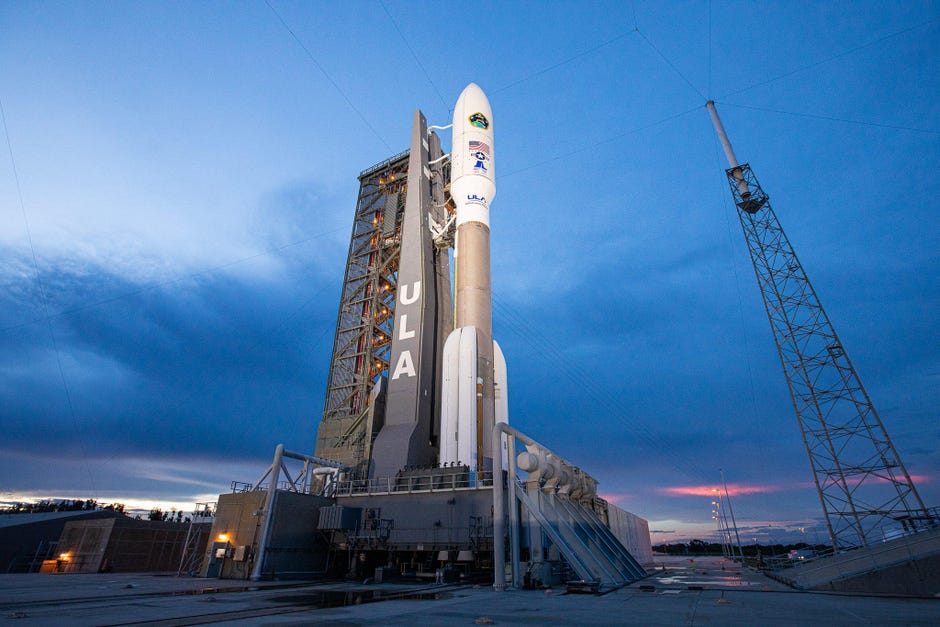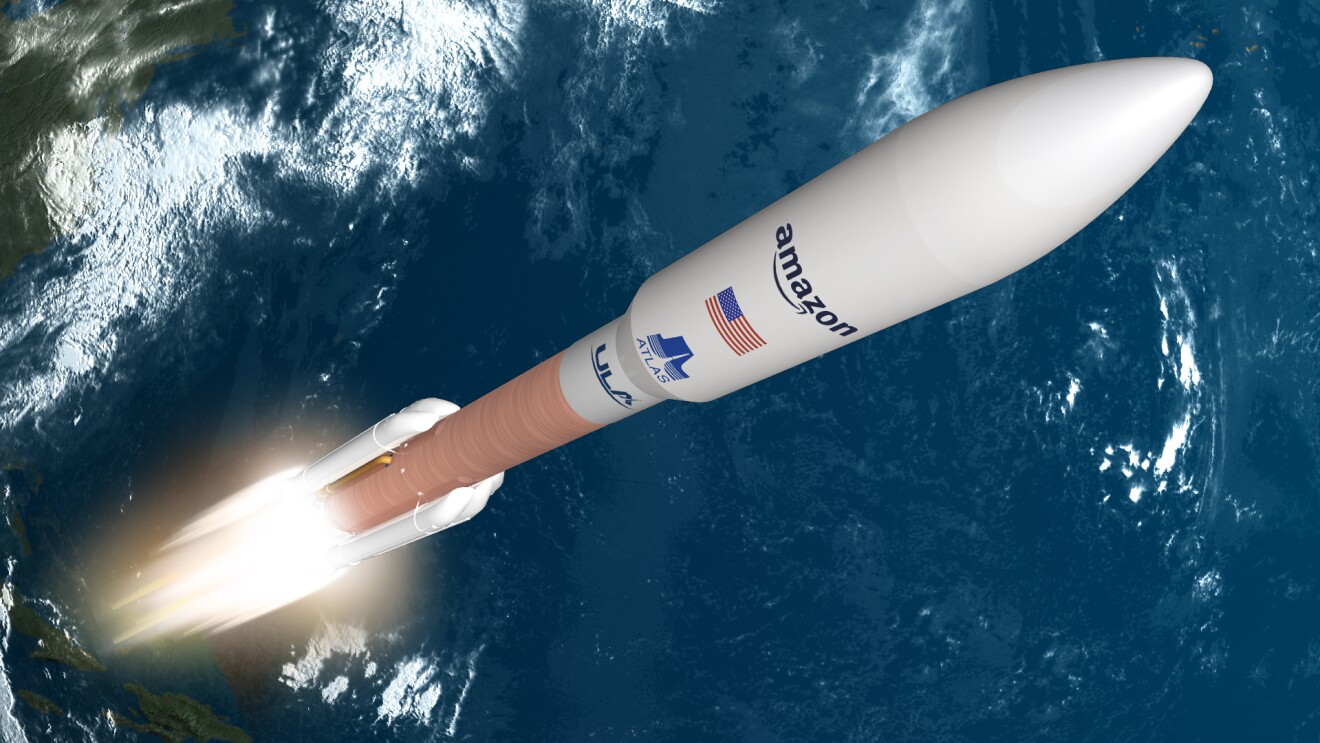
A Closer Look At ULA’s Atlas V Launch Vehicle
United Launch Alliance is a very well-established and experienced company with a long history of everything rocket-related. Over time they have managed to develop and create a large list of different launch vehicles each serving a specific purpose and or goal. In addition, no matter the rocket, ULA has continued to keep a very impressive track record regarding mission success and time.
United Launch Alliance’s Atlas V rocket is a good example of their progress over time and the success of the company. This rocket has a lot of experience and stood out thanks to its performance, configurations, propulsion, and more. All of which combined into a single launch vehicle capable of consistently and reliably launching payloads to different destinations in space.
Launch Vehicles such as the Atlas V help cement ULA as a very reliable company. Launching rockets is not only extremely complex but also risky. This is often a concern for different companies and agencies when purchasing a spot on a rocket. Not to mention there are often delays and a hefty price tag if something goes wrong. ULA has worked hard over a long period of time to ensure this is not the case when launching with the company.
Atlas V Background

The Atlas V is a great example of exactly what United Launch Alliance has been working towards in terms of quality and success over time. It specifically encompasses ULA’s motto of getting to space safely and on time. The Atlas V is a two-stage expendable launch vehicle that has been operating for quite a while now. The rocket’s first launch was almost 20 years ago in 2002. After launching for around two decades, the launch vehicle has an additional 29 launch contracts planned prior to retirement. United Launch Alliance is working on future rockets including the upcoming Vulcan Centaur and more.
Prices for Atlas V start around $109 million. Still very expensive but reasonable within the space industry. ULA points out that the rocket has more than 15 years of 100% mission success which is founded on a heritage of more than 600 Atlas program launches. This Atlas launch vehicle family is very big and includes a lot of history that was applied when creating the Atlas V. In addition, the company points out it delivers the most sensitive and critical missions including planetary exploration missions, classified defense systems, and key commercial assets. Lastly, the rocket is meant to launch with Boeing’s Starliner module on top taking humans up and down from the International Space Station.
Atlas V Features

Configurations – The first important and unique aspect of the Atlas V launch vehicle is the different configurations available. These configurations change certain features of the rocket adding power, space, and more depending on the mission at hand. This helps expand the vehicle’s capabilities without creating an entirely new launch vehicle. This not only saves money but time as well. The Atlas V uses a standard common core booster with up to five solid rocket boosters or SRBs, a Centaur upper stage in a single or dual-engine configuration, and multiple different fairing sizes. ULA mentions that Centaur is the world’s highest-performing upper stage.
The pressure-stabilized tanks combined with the lightweight Aerojet Rocketdyne RL10C-1 engine provides industry best thrust-to-weight ratio. The stage has demonstrated long coast relight capability that enables it to service any orbital need. One example is the Atlas V 400 series. This features less solid rocket boosters along with a much smaller payload fairing. Taking a look at the larger Atlas V 500 series configuration you have more SRBs and a much larger payload fairing increasing the power along with the space available. Payload fairings have many different options including three different sizes of 4-meter diameter fairings along with three different options of 5-meter diameter fairings. Each of the different options within includes a difference in height to facilitate a larger number of payloads no matter the size.
Performance – The next feature of the Atlas V I want to highlight is the performance. Due to the launch vehicle having a massive amount of configurations, the performance and payload capacity to different destinations is very extensive. ULA mentions that the Atlas V helps provide an optimal orbit for each customer, delivering industry-best spacecraft orbital insertion accuracy. The list provided showcases the payload capacity for each configuration. In order to understand the list, you need to know the flight configuration key. This consists of three numbers representing the exact features of the rocket. The first number shows payload fairing size, the second is the number of solid rocket boosters, and the third is the number of Centaur engines.
At the very top, you have 401 with no payload capacity to GEO and a 9,800 kg capacity to low Earth orbit. Moving down you have 421 meaning there are additional solid rocket boosters. This variant can launch 2,480 kg to GEO and an increased 13,600 kg to LEO. Next up is configuration 531. With another SRB, 600 kg of capacity is added to GEO making the total 3,080 kg. Low Earth orbit on the other hand has slightly decreased going to 13,500kg. The last variant I want to mention is 551. With all five solid rocket boosters attached to the core stage, the Atlas V has a payload capacity to GEO of 3,850 kg and 18,850 kg to LEO. The addition of multiple SRBs was capable of almost doubling the initial payload to low Earth orbit and more.
Propulsion – The last aspect of the Atlas V that I want to mention is the propulsion and equipment powering the rocket. Starting with the main engine delivering more than 860,000 pounds of thrust at liftoff and an impressive range of throttling capability. This engine is the RD-180 which combines innovation and performance. It uses liquid oxygen and liquid kerosene as the propellant. The two-thrust-chamber RD-180 engine is a complete propulsion unit equipped with hydraulics for control valve actuation and thrust vector gimbaling. In addition, there are pneumatics for valve actuating and system purging along with a thrust frame to distribute loads.
The specific impulse is 311 seconds with a weight of just over 12,000 pounds. The next key propulsion feature is the solid rocket boosters. When missions demand additional thrust the Atlas integrates up to three SRBs on the Atlas V 400 series and up to five on the 500 series. These have a peak vacuum thrust of 380,000 pounds and a specific impulse of 279.3 seconds. They each weigh around 103,000 pounds and have a nominal burn time of 88.3 seconds. Lastly, there is the upper stage. The Atlas V relies on the RL10 propulsion system to power the second stage. These have a lot of experience and have continued to be successful over time. This engine uses liquid hydrogen and liquid oxygen as propellants to produce a nominal thrust of 22,900 pounds.
Conclusion
United Launch Alliance puts a lot of effort and takes pride in their continued mission success. This not only involves missions going as planned but launching on time as well. Over time they have developed and launched a large list of rockets. The Atlas V however is an older rocket that managed to consistently launch missions without a single problem. It did this thanks to the unique configurations, performance, and propulsion. All of which combined into a single launch vehicle with an impressive track record. While the Atlas V is an older rocket, it still has future missions planned. We will have to wait and see how the rocket progresses and the impact it has on the space industry.
